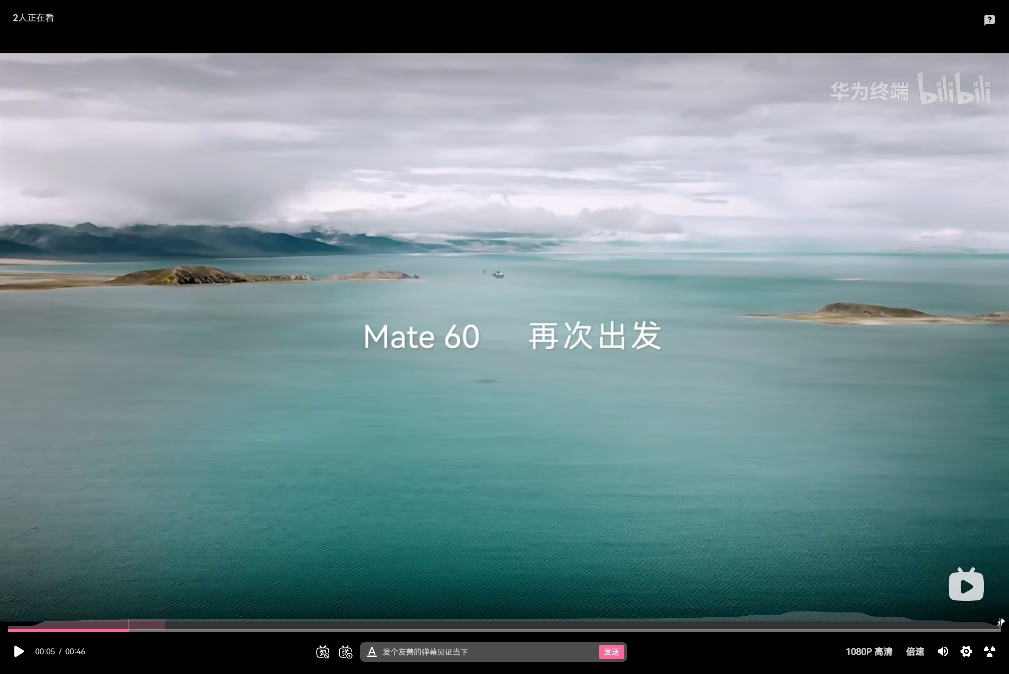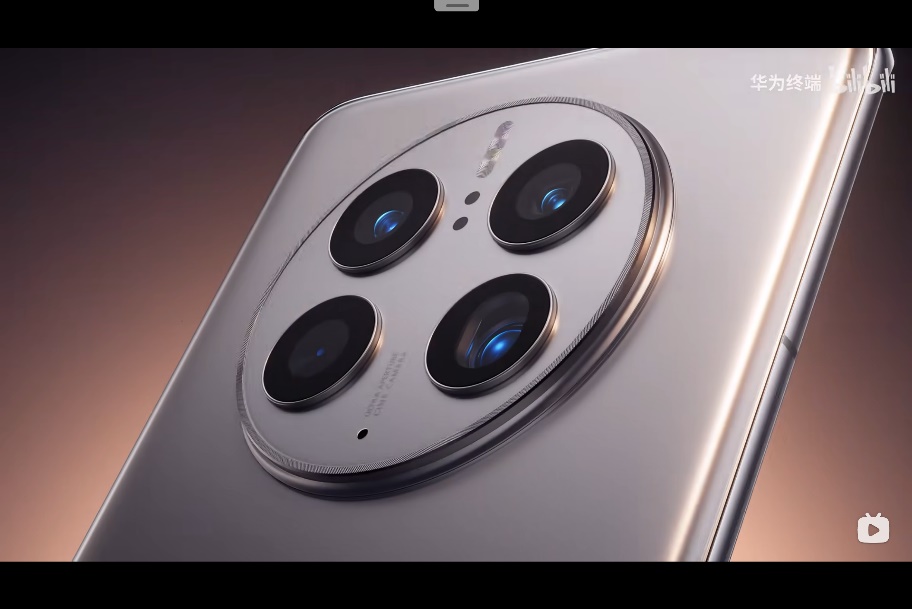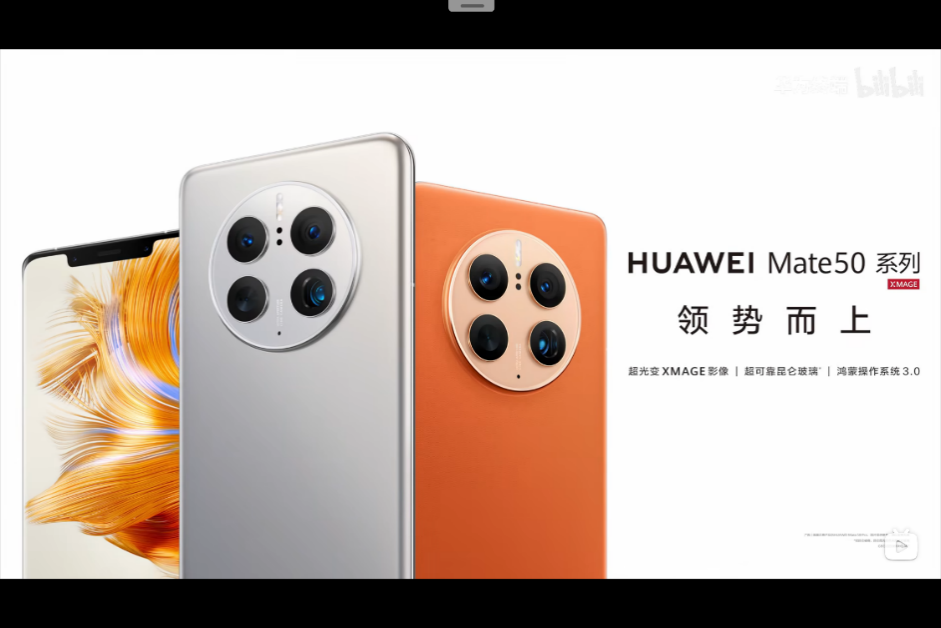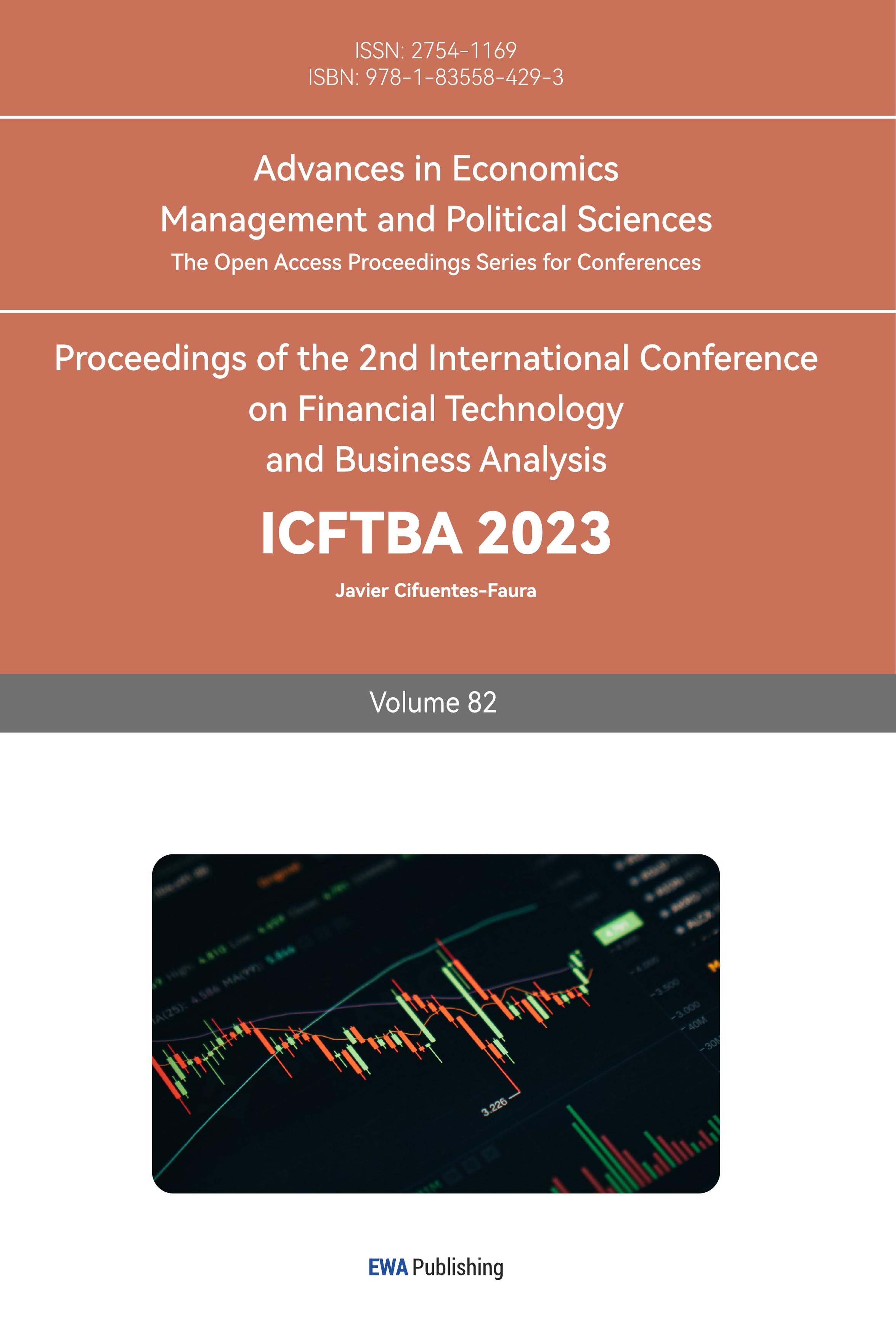1.Introduction
In the current fiercely competitive market environment, Chinese brands face the challenge of effectively promoting their products and shaping their brand image. This challenge encompasses not only the ways of product promotion but also how to shape the brand image through the products themselves. A successful communication strategy not only contributes to the brand's market promotion but also helps establish a favorable social image for the company and build better public relations with the audience. For instance, Apple Inc. has gained worldwide recognition through its unique product design and exceptional user experience, cultivating a large base of loyal customers, or "Apple fans." Through a series of innovative products such as the iPhone, iPad, and MacBook, Apple has successfully shaped a brand image that embodies high quality, innovation, and style.
However, creating an effective communication strategy for Chinese brands is not an easy task. On one hand, brands need to tailor a suitable communication strategy based on their positioning and the market environment. On the other hand, brands need to understand the effectiveness of their communication strategies to better evaluate their impact and make improvements. To gain a better understanding of the application and effects of communication strategies, this paper aims to examine Huawei's brand communication by focusing on the specific cases of Huawei's Mate 50 and Mate 60 series smartphones. By exploring the changes in their communication strategies and the resulting impact, this study seeks to shed light on the application and effectiveness of communication strategies in branding for Chinese companies.
2.Literature Review
Several scholars have conducted a series of studies on how to develop effective communication strategies for Chinese brands. These studies have analyzed the formulation and evaluation of brand communication strategies from different perspectives, providing valuable insights for companies. Ma Zhiping[1] examined brand communication strategies from the perspective of consumer behavior. They found that companies should focus on the characteristics of consumer behavior and develop targeted communication strategies to enhance brand communication effectiveness. This implies that brands need to gain in-depth understanding of the needs, preferences, and behavioral patterns of their target consumers in order to effectively convey brand value.
Tuo Wentao[2] explored the impact of online public opinion on brand communication strategies. Through a case study on the "Didi Hitch Incident", they suggested that companies should pay attention to online public opinion and make timely adjustments to their communication strategies in order to effectively handle public relations crises and enhance brand reputation. In the current digital era, the influence of online public opinion on brand image is increasingly significant, requiring companies to closely monitor online discourse and make corresponding adjustments in their communication strategies.
Furthermore, Tang Liping[3] investigated brand communication strategies in the context of new media environment. She argued that new media has transformed the media ecology and information structure of brand communication, constantly innovating the ways companies communicate their brands. This shift has led to fragmented audiences and empowered consumers as creators, contributors, and commentators.
While the academic community has extensively researched brand communication strategies, most discussions have focused on macro-level strategies or specific communication channels, with limited attention given to the evaluation of specific communication strategies. This paper aims to address this research gap by selecting the promotional campaigns of Huawei's Mate 50 and Mate 60 series smartphones as case studies. It delves into the changes in their communication strategies and explores the potential effects brought about by these changes, aiming to contribute to the understanding of this field of research.
3.An Overview of Huawei's Situation and Challenges
With the rapid growth of the Chinese economy, domestic brands have emerged and faced fierce competition on a global scale. However, these brands encounter various challenges in areas such as brand image, quality standards, intellectual property protection, market access, and cultural differences. To overcome these challenges, domestic brands, including Huawei, need to enhance their competitiveness, strengthen brand building and innovation capabilities, gain international recognition, expand market share, and contribute to the sustained development of the Chinese economy and international reputation.
Huawei, a prominent Chinese high-tech company, has established itself as a leader in communication equipment, smartphones, cloud computing, and artificial intelligence since its inception in 1987. The company has undergone four distinct stages of development, beginning with a focus on switch equipment and expanding into both domestic and international markets during the initial stage from 1987-1997. During the expansion stage from 1998-2003, Huawei entered the mobile communication network sector, forging partnerships with global operators and expanding into multiple countries across Africa, Asia, and Europe. In the diversification stage from 2004-2012, Huawei diversified its portfolio, venturing into broadband access, optical transmission, and wireless networks, ultimately becoming a leading global ICT supplier. In the current stage from 2013 to the present, Huawei has shifted its focus to terminal devices such as smartphones, tablets, and laptops, while also investing in emerging areas including cloud computing, artificial intelligence, and the Internet of Things, thereby cultivating a connected and intelligent ecosystem.
According to Huawei's 2022 annual report, the company recorded a global sales revenue of 642.3 billion RMB and a net profit of 35.6 billion RMB. The carrier business sector contributed 284 billion RMB in sales revenue, the enterprise business sector generated 133.2 billion RMB, and the consumer business sector generated 214.5 billion RMB. Huawei's revenue in the Chinese market accounted for over 65% of its total revenue.
Despite facing restrictions imposed by the U.S. government, Huawei remains the global leader in the telecommunications equipment market, holding the top position in five out of six tracked areas by Dell'Oro Group[4]. In overseas markets, Huawei holds an 18% market share, on par with Ericsson and slightly lower than Nokia. However, Huawei confronts challenges due to political pressure and sanctions, resulting in the loss of partners and supply chain resources in some international markets. This has adversely impacted their business operations and development.
In August 2023, Huawei released the Mate60 series smartphones, which received widespread acclaim online and partially improved the brand's image. These products achieved technological breakthroughs, introducing innovative features like "satellite communication" and "satellite telephony," generating positive feedback. Huawei also made noticeable changes in its product marketing strategy, which may have contributed to the success of their promotional efforts. Analysis of Changes in Huawei's Smartphone Marketing Strategy.
4.Methods
This study focuses on the promotional strategies employed for Huawei's Mate50 and Mate60 series smartphones, aiming to delve into the changes in their marketing strategies and the potential impact of these changes, filling gaps in the current research field. To comprehensively compare the changes in promotional strategies between the Mate50 and Mate60 smartphones, a multidimensional comparative approach is adopted, including static product pages and dynamic promotional videos. Furthermore, in order to evaluate the effectiveness of the two promotional strategies, a thorough analysis of user comments is conducted, with a focus on exploring the similarities and differences in high-frequency keywords. This approach helps to understand the impact of promotional strategies on consumer perception. The details of three methods for analysis are as follows:
4.1.Comparative Analysis of Static Product Pages
The static product pages of the Mate50 and Mate60 smartphones are examined and compared. This analysis includes an assessment of visual elements such as design, layout, and imagery, as well as textual components such as product descriptions, key features, and specifications. By comparing the content and presentation of these pages, I can identify the changes in Huawei's messaging, branding, and positioning strategies.
4.2.Comparative Analysis of Dynamic Promotional Videos
The dynamic promotional videos for the Mate50 and Mate60 smartphones are analyzed and compared. This analysis involves an examination of the narrative structure, visual aesthetics, storytelling techniques, and messaging conveyed in the videos. By comparing the tone, style, and messaging of these videos, I can identify the shifts in Huawei's storytelling approach, emotional appeal, and overall promotional strategy.
4.3.Analysis of User Comments
User comments and reviews related to the Mate50 and Mate60 smartphones are collected and analyzed. This analysis focuses on extracting and analyzing high-frequency keywords used by consumers in their feedback. By identifying the similarities and differences in the keywords used to describe the two smartphone series, I can gauge the impact of the changed marketing strategies on consumer perceptions, preferences, and satisfaction levels.
5.Results
Through a multidimensional comparison of Huawei's promotional strategies for the Mate50 and Mate60 series smartphones, it can clearly observe Huawei's transformation in its promotional approach. Analyzing the product pages, Huawei reduced the emphasis on specific product features in the promotion of the Mate60 series, placing greater emphasis on brand philosophy. The comparison of the quantity and content of promotional videos also indicates a reduced frequency of promotional videos focused on technical features for the Mate60 series, with a greater emphasis on conveying the brand's core values. Comparing the release videos of the two generations, I find that the Mate60 series performs better in terms of video views, comments, and bullet comments, which may be attributed to Huawei's strategic adjustments in promotion.
Furthermore, the promotional videos for the Mate60 series cleverly employ metaphorical techniques, closely associating the brand with the nation and fostering a sense of consumer identification and belonging. In contrast, the promotional videos for the Mate50 series primarily highlight the product's appearance and functionality, emphasizing Huawei's core competitive advantages. In summary, Huawei's promotional strategy for the Mate60 series places greater emphasis on conveying brand philosophy and establishing emotional connections with consumers, aiming to stand out in the fiercely competitive market environment.
The specific analysis results are as follows:
5.1.Comparative Analysis of Static Pages (Huawei Online Store Product Pages)
According to relevant laws and regulations, to ensure the legality of advertising promotions, product detail pages typically include annotations at the end to provide further explanations of the promotional content. The number of annotations is proportional to the length of the promotional content. In the case of the Mate60 model, there are a total of 14 annotations, whereas the corresponding Mate50 model has 24 annotations. [5] It is noteworthy that the number of annotations for the Pro models of both generations is the same. This indicates that Huawei has reduced the emphasis on promoting specific product features in the Mate60 series.
5.2.Comparative Analysis of Dynamic Content (Bilibili Videos)
5.2.1.Segmented Data Comparison
Based on the Bilibili account " Huawei Terminal [6]" : In terms of the number of promotional videos, the Mate50 series released four videos for pre-launch anticipation before September 6, 2022. Within one month after the launch, an additional 24 videos were released for related promotion. In the first six months, a total of 51 promotional videos were published. On the other hand, for the Mate60 series, there were no pre-launch videos released by the official account. Within the first month, a total of 11 promotional videos were published, and as of November 4, 2023, there are currently 21 videos promoting the series. This indicates that Huawei has significantly reduced the frequency of promotions.
Furthermore, in terms of the content of promotional videos, there have been significant changes. Through the analysis of the 51 promotional videos of the Mate50 series, 39 directly or indirectly mentioned technical highlights or distinctive features, while the remaining 12 focused on promoting brand ideology. Thus, the proportion of videos emphasizing technical features accounted for 76.4%. In contrast, out of the 21 promotional videos of the Mate60 series, only six were focused on technical features, accounting for 28.6%, while the rest were centered around brand ideology. This indicates that in their promotional strategy, Huawei's Mate60 series places more emphasis on brand ideology and reduces the emphasis on highlighting technical advantages compared to previous generations.
To further clarify Huawei's changes in promotional strategy, I selected the release videos of both generations for comparison, as shown in Table 1. Release videos are the initial videos where the brand showcases the product to consumers for the first time, and they largely represent the brand's promotional ideas.
Table 1: The Statistics of Release Videos for Mate50 and Mate60 Series
|
Title |
[Huawei Mate 50series] Leading Design, Irresistible Charm |
[Huawei Mate 60series] Paying Tribute to the Unyielding Power |
|
Time |
1minutes 2seconds |
46 seconds |
|
Views |
124,000 |
4,768,000 |
|
Comment numbers |
960 |
24324 |
|
Bullet Screen Interactions |
116 |
34,000 |
|
Release Dates |
September 6, 2022, 14:49 |
August 29, 2023, 12:36 |
Note: Data is accurate as of Sunday, December 3, 2023.
Overall, despite the shorter duration of the release videos for the Mate60 series, which is only two-thirds of the Mate50 series, the data for video views, comment numbers, and bullet screen interactions overwhelmingly surpass those of the Mate50 series.
Comparison of Music Selection: There are significant differences in the music selection between the two videos.
The music in the video titled "[HUAWEI Mate 60series] Paying Tribute to the Unyielding Power " starts with a soothing tone and gradually transitions into a more uplifting and rhythmic melody, accompanied by percussion beats. It possesses a strong sense of rhythm, which helps viewers immerse themselves in the emotional atmosphere of the film. Additionally, the incorporation of chanting and water sounds further enhances the overall atmospheric quality of the video.
On the other hand, the music in the video titled "[Huawei Mate 50 series] Leading Design, Irresistible Charm" maintains a relatively fixed tone. It utilizes a subdued and elegant musical style to complement the visuals of the showcased smartphones.
5.2.2.Video Content Analysis
The promotional video for the Huawei Mate 60 series skillfully draws parallels between the brand and national spirit. Titled "Paying Tribute to the Unyielding Power", it uses the metaphor of the Yarlung Tsangpo River to represent Huawei's pursuit of innovation in the face of challenges. The video depicts the river, one of the highest-altitude rivers in the world, as a symbol of China's indomitable spirit. It implies that just as the river flows on unrelentingly, Huawei continues innovating for national prosperity despite obstacles. The portrayal of overcoming the river canyon underscores Huawei's belief in progress through difficulty. This subtlety hints at the company rising above US sanctions on chips. When introducing new color options, the video names them after famous Chinese mountains to integrate local culture into products. This highlights Huawei's roots while emphasizing products' sturdiness, akin to the highlands. The approach fosters identification with Chinese heritage and strength. In overall, the video maximizes emotional impact through minimal yet powerful symbolism. It establishes Huawei as embracing national virtue rather than dwelling on specs. The economical narrative effectively links brand philosophy to national spirit.

Figure 1: Mentioned previous products to establish a sense of familial continuity

Figure 2: Employs the metaphor of the Yarlung Tsangpo River
The promotional video for the Huawei Mate 50 series, titled "[Huawei Mate 50series] Leading Design, Irresistible Charm", directly showcases the product's appearance and features, conveying a unique design language and innovative technology to the audience. This strategy not only highlights the core competitive strengths of the Huawei brand but also stimulates consumer desire to purchase.
Display of Product Appearance: The video begins with close-up shots, focusing on the details of the phone such as the screen, camera, and frame, allowing viewers to perceive the product's exquisite and high-end qualities. Subsequently, the focus transitions from close-ups to a comprehensive display of the overall device, giving viewers a clear and complete view of the product's aesthetics and style. The video utilizes smooth camera transitions and dynamic music to create a fashionable and high-quality atmosphere, generating a positive impression and interest in the viewers.
Introduction of Product Features: After showcasing the product's appearance, the video concludes by highlighting the distinctive features of this generation of products, such as XMAGE imaging, Kunlun glass, and HarmonyOS 3.0 operating system, enabling viewers to understand the product's performance and advantages. This strategy emphasizes Huawei's leading position in technological innovation, attracting consumer attention and curiosity, and enticing them to personally experience the allure of the product.

Figure 3: The majority of the video focuses on displaying the product's appearance

Figure 4: Highlights the key selling points and features of the product
5.3.Analysis of the Impact (Bilibili Video Comments)
To validate the effectiveness of Huawei's shift in promotional strategy, I collected comment data from the two videos mentioned above and conducted a simple statistical analysis. Upon observation, I noted that the initial release of the Mate60 generated a comment count comparable to that of the Mate50 series promotion. However, over time, the gap between the two grew, indicating that the Mate60 series had a stronger impact in terms of dissemination.
Table 2: Comparison of the Comments of Release Videos for Mate50 and Mate60 Series
|
Title |
Huawei Mate50 Promotional Video |
Huawei Mate60 Promotional Video |
|
Total comment count. |
332 |
1448 |
|
Average comment length |
22.72 |
34.15 |
|
Number of comments within 24 hours |
301 |
438 |
|
Average comment length within 24 hours |
22.49 |
34.54 |
|
Number of comments within 72 hours |
308 |
638 |
|
Average comment length within 72 hours |
22.52 |
30.41 |
Additionally, I conducted a word frequency analysis. Overall, the number of high-frequency words (frequency greater than 10) in the comment sections of the two videos is positively correlated with the total number of comments. The Huawei Mate60 series promotional video had a total of 195 high-frequency words, while the Mate50 series promotional video had 27. The high-frequency words in both videos are also significantly associated with the video content. For example, in the Mate50 series promotional video, there are more terms related to the display of the phone's appearance, such as "good-looking," "design," and "star ring." In the Mate60 series promotional video, there are terms related to the imagery in the video, such as "Wan Chong Mountain."
Specifically, the top five high-frequency words in the comments for the Huawei Mate50 series are: "good-looking" (43), "design" (42), "40" (32), "single" (22), and "series" (20). Among these, the comment with the second-highest number of likes (632) expresses, "Honestly, the Mate40 is not as good-looking, but the screen and performance improvements really make it a difficult choice." This comment indicates that some viewers are not completely convinced by the appearance showcased in the video and instead emphasize the shortcomings in terms of screen and performance. Another comment that received 589 likes, "I'll stick with the Mate40 Pro for now," echoes the high-frequency word "40." Although the video did not mention the previous generation product, there are still many discussions among users about the previous generation product.
Figure 5: High-frequency words in the Mate50 series promotional video
The top five high-frequency words in the comments of the Huawei Mate60 series promotional video are: "Huawei" (660), "cheer" (147), "phone" (137), "China" (134), and "come back" (118). Among them, the comment with 3109 likes, "Welcome back, leading the way," corresponds to the high-frequency word "come back," demonstrating positive feedback from viewers. Additionally, the equally high-frequency words "Kirin" (93), "Apple" (114), "United States" (66), and "A light boat has passed many Mountain(transcend many handicaps)" (68) are also thought-provoking. The comment with 214 likes, "On the evening of August 27, 2023, U.S. Secretary of Commerce Raymond Do arrived in Beijing, commencing a four-day visit to China. Huawei suddenly released the Mate60 series phones on August 29, featuring Kirin chips, 5G, and satellite communication," aligns with the word "United States" and clearly elevates the discussion to the realm of "national sentiment."
Figure 6: High-frequency words in the Mate60 series promotional video
From this, it can be observed that Huawei did not actively elevate the discourse or associate it with national sentiment in its promotional strategy. However, through a shift in video style, they managed to evoke a sense of empathy among a vast audience and achieve a relatively favorable promotional outcome.
6.Conclusion
This paper employs a method of data collection from social media platforms and conducts quantitative analysis to compare and examine the changes in Huawei's brand product promotion from a micro perspective. It reveals the shift in their promotional strategy in response to brand management challenges and evaluates the effectiveness of their promotional tactics. The content analysis of two product promotional videos demonstrates that Huawei has transitioned from traditional promotional methods that focus on showcasing the product's basic attributes such as design, performance, and price. Instead, they have adopted a promotional approach that combines specific imagery to shape the product's image, attempting to imbue it with emotions such as patriotism, breakthrough, and innovation, in alignment with their brand image and prevailing public sentiment trends.
The analysis of the video comment data reveals that this shift in promotional approach has played a significant role in guiding public opinion. Viewers' concerns have transcended product attributes and elevated to the level of national rejuvenation. The audience feedback also showcases recognition and empathy towards Huawei's brand philosophy. Therefore, it can be observed that Huawei's adoption of imagery attachment in their promotional tactics has successfully provided consumers with focal points that surpass the product's basic attributes, thereby stimulating emotional identification and purchase enthusiasm among consumers. This successful case not only offers valuable insights for other domestic brands in formulating their promotional strategies but also presents a novel approach and potential for corporate brand image shaping and emotional attribution through the use of imagery attachment.
References
[1]. Ma, Z. (2014). A Study on Brand Marketing Strategies Based on Consumer Behavior: A Case Study of the Mobile Phone Industry. Chinese Collective Economy, 15, 67-68.
[2]. Tuo, W. (2019). A Study on Brand Crisis Response Strategies in the Network Public Opinion: A Case Study of the "Didi Hitch Incident" [Doctoral dissertation, Jiangxi University of Finance and Economics].
[3]. Tang, L. (2015). The Situation of Brand Communication in the New Media Environment. China Youth Social Sciences, (02), 121-124. https://doi.org/10.16034/j.cnki.10-1318/c.2015.02.024
[4]. Dell’Oro Group. (2022). Market research. https://www.delloro.com/
[5]. Huawei. (2023). Mate 60. https://www.vmall.com/index.html
[6]. Huawei. (2023). Huawei Mate series. https://space.bilibili.com/85587800/
Cite this article
Chang,J. (2024). From Reality to Virtuality- An Analysis of Huawei's Evolving Brand Communication Strategy and Its Effects. Advances in Economics, Management and Political Sciences,82,218-227.
Data availability
The datasets used and/or analyzed during the current study will be available from the authors upon reasonable request.
Disclaimer/Publisher's Note
The statements, opinions and data contained in all publications are solely those of the individual author(s) and contributor(s) and not of EWA Publishing and/or the editor(s). EWA Publishing and/or the editor(s) disclaim responsibility for any injury to people or property resulting from any ideas, methods, instructions or products referred to in the content.
About volume
Volume title: Proceedings of the 2nd International Conference on Financial Technology and Business Analysis
© 2024 by the author(s). Licensee EWA Publishing, Oxford, UK. This article is an open access article distributed under the terms and
conditions of the Creative Commons Attribution (CC BY) license. Authors who
publish this series agree to the following terms:
1. Authors retain copyright and grant the series right of first publication with the work simultaneously licensed under a Creative Commons
Attribution License that allows others to share the work with an acknowledgment of the work's authorship and initial publication in this
series.
2. Authors are able to enter into separate, additional contractual arrangements for the non-exclusive distribution of the series's published
version of the work (e.g., post it to an institutional repository or publish it in a book), with an acknowledgment of its initial
publication in this series.
3. Authors are permitted and encouraged to post their work online (e.g., in institutional repositories or on their website) prior to and
during the submission process, as it can lead to productive exchanges, as well as earlier and greater citation of published work (See
Open access policy for details).
References
[1]. Ma, Z. (2014). A Study on Brand Marketing Strategies Based on Consumer Behavior: A Case Study of the Mobile Phone Industry. Chinese Collective Economy, 15, 67-68.
[2]. Tuo, W. (2019). A Study on Brand Crisis Response Strategies in the Network Public Opinion: A Case Study of the "Didi Hitch Incident" [Doctoral dissertation, Jiangxi University of Finance and Economics].
[3]. Tang, L. (2015). The Situation of Brand Communication in the New Media Environment. China Youth Social Sciences, (02), 121-124. https://doi.org/10.16034/j.cnki.10-1318/c.2015.02.024
[4]. Dell’Oro Group. (2022). Market research. https://www.delloro.com/
[5]. Huawei. (2023). Mate 60. https://www.vmall.com/index.html
[6]. Huawei. (2023). Huawei Mate series. https://space.bilibili.com/85587800/









